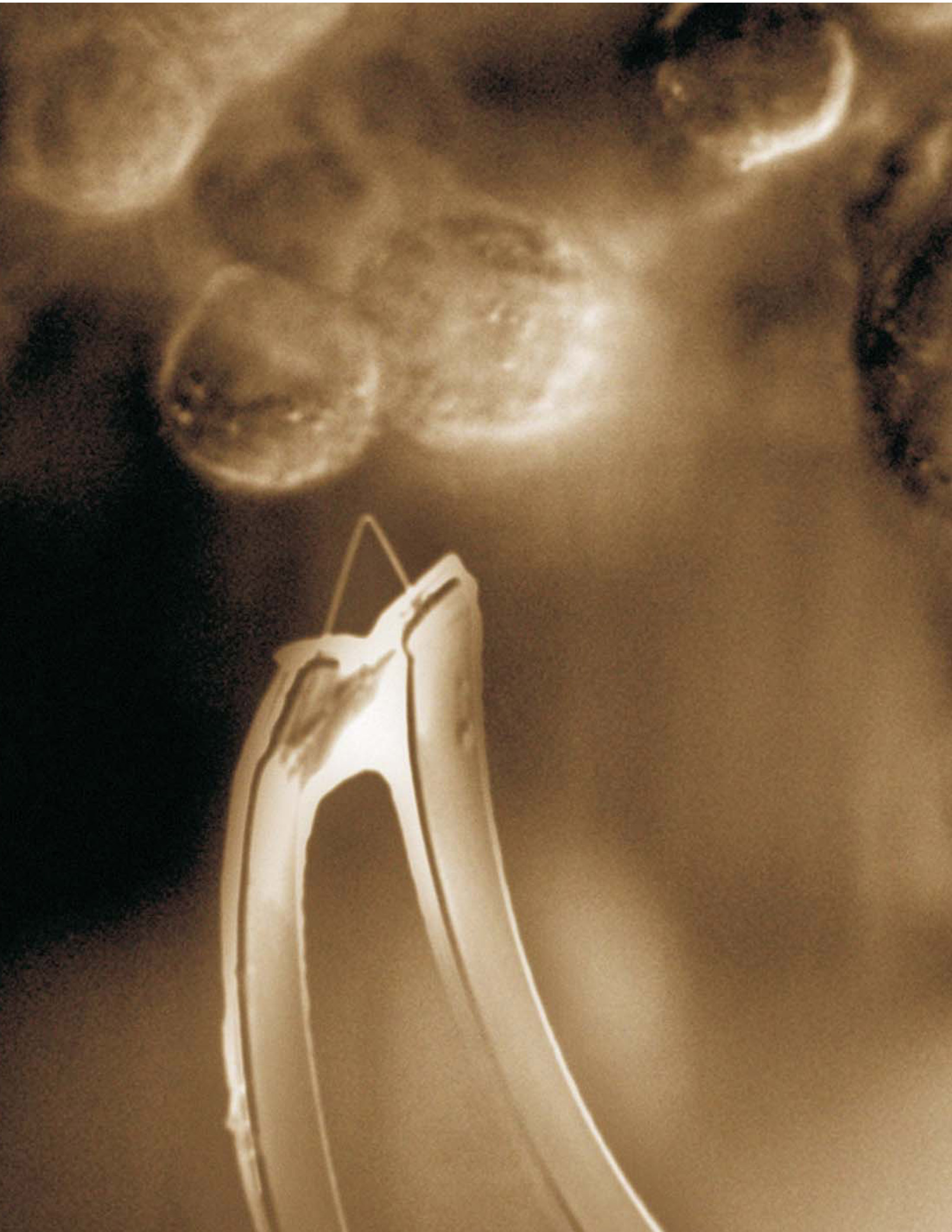NanoFET bioprobe
DOI: 10.1063/1.3490511
From ion channels to nerve signaling to beating cardiac tissue, the biological world is replete with electrical signals. But the intracellular probes in the experimenter’s toolbox, including glass and carbon microelectrodes, are typically large or invasive and can irreversibly alter the cells. New work from Charles Lieber and colleagues at Harvard University presents a highly sensitive, minimally invasive alternative: a biocompatible nanoscale FET.
This composite image shows the new probe approaching individual cells. At the heart of the probe is a highly doped silicon nanowire, tens of nanometers in diameter, that is fabricated to have a V-shaped 60° kink. Just to one side of the vertex, a less-doped region of the wire forms the FET active region. The nanowire connects to metallic source and drain electrodes on a thin, 5-µm-wide polymer layer that causes the probe to flex. Changes in the electric potential or solution pH surrounding the nanowire produce measurable and quantifiable changes in the device’s conductance. Moreover, when coated with a phospholipid bilayer—the material cell membranes are made of—the nanoFET can be readily slipped into a cell for robust recording of intracellular potentials with high spatial and temporal resolution, and it can be repeatedly removed and reinserted without damaging the cell. (B. Tian et al., Science 329 , 830, 2010 http://dx.doi.org/10.1126/science.1192033
To submit candidate images for Back Scatter, visit http://www.physicstoday.org/backscatter.html

Image © Science/AAAS.)





